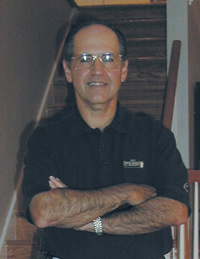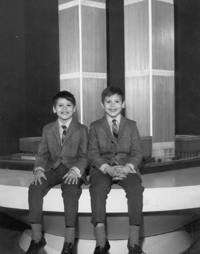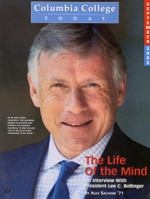 |
 |
 |
 |
|
ALUMNI PROFILE Philip Cottone ’61 started his career in real estate with the very beginnings of the World Trade Center.
Although his initial career plan was to get a master’s degree in English and become a teacher, the birth of three children while he was an undergraduate — first Anthony ’80, born freshman year, followed by twins his junior year — meant Cottone’s first priority was to make a stable living. After graduation, he took a job with what is now the Port Authority of New York and New Jersey, and settled into the real estate section, then headed by Bob Curtiss ’27. The Port Authority operated about 25 facilities in the port district, and the idea emerged to consolidate international trade facilities, which were spread around town, into one headquarters building in lower Manhattan, on the east side. The proposed budget was $350 million. Cottone’s job — for the World Trade Center and on other projects — initially involved researching property ownership and negotiating property rights. He started N.Y.U. Law School at night in 1962 to help him deal with the lawyers and legal issues in real estate, and graduated four years later. The initial project was stalled because of opposition from New Jersey politicians, who didn’t agree with all of that money being spent by the Authority with no direct benefit to New Jersey. Then a Port Authority staffer proposed that the center be located on the western side of lower Manhattan and combined with the purchase and rehabilitation of the railroad that connected New York and New Jersey — “the Tubes,” as it was called. The project not only went forward, but turned into a more ambitious plan for the massive twin towers. Cottone began title searches for the 13 square-block area where the towers were to be located. “Initially, I was part of a top secret group that was developing the information quietly, without letting anyone in the city administration or the neighborhood know what we were doing,” he says.
When the project was unveiled, it was more controversial than usual for a development, because of its size and because the Port Authority was criticized for going into the real estate business. “At the time, it seemed like an outrageously elaborate project for a relatively simple task,” Cottone says. So about once a month he was dispatched to give a talk at a lunch or dinner with a slide projector and images of the future World Trade Center. “I was dealing with a lot of angry folks — the property owners and the tenants,” Cottone remembers. A lead opponent was Lawrence Wien ’25, who owned the Empire State Building. He formed “The Committee for a Reasonable World Trade Center” and brought one of the many lawsuits against the Port Authority. The suits failed. Within a couple of years, Cottone became head of the acquisition, management and relocation program that cleared the way for construction. In 1972, the Twin Towers opened, at a final cost of more than $1 billion, and Cottone left the Port Authority. “I’d done what there was to do from a real estate point of view, and it was time to move on,” Cottone says. He has stayed in real estate, heading his own investment and development company headquartered in Philadelphia since the early 1980s. But the World Trade Center, even though he hadn’t liked the architecture or even the idea of it at first, remained a point of pride for him. “It was always a part of my growing up,” he says. “It was something I could point to and tell my children and grandchildren I was a part of.” Which is why the events of September 11, 2001, hit so close to home for Cottone. He wrote about his feelings in a cover story for Right of Way, a trade magazine: “Those quirky towers were, perhaps, the wrong buildings in
the wrong place at the wrong time, built by the wrong folks, but
they became everything they were designed to be, and more. They
rejuvenated lower Manhattan and helped revive the City of New York
economically and spiritually. They did take on a larger mantle over
the years, and came to represent the financial strength, vitality
and, yes, audacity of New York, and America. Alas, they now have
become a permanent symbol of so much that is both good and evil
about our world, and all of our thoughts about them, even mine,
relate to both unspeakable horrors and unceasing bravery; in short,
a national tragedy, the implications of which are still being
played out on the world stage.” |
|
|||||||||||||||||||||||||||||||||||||||||||||||


